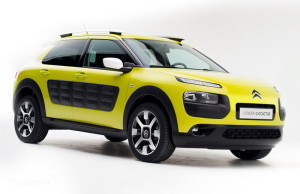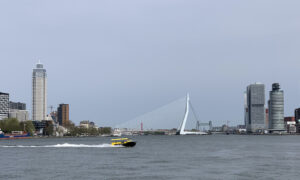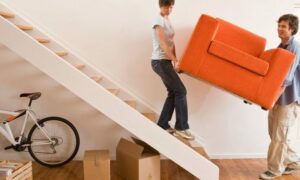(Editor’s note: Terry Boyd also contributed to this post.)
Despite the availability of great public tranportation in most of Europe, countries such as Germany, France and Italy very much retain their car cultures.
If you’re coming from the United States and you haven’t been to Europe for awhile, the first thing you notice getting off the plane in Frankfurt or Amsterdam is the cars are all way cooler here than the comparable American versions. That said, Europeans are rapidly falling in love with small SUVs, just like their American counterparts … a game changer. In fact, with 740 million people compared to 320 million Americans, and 10 of the 20 wealthiest nations in the world, Europe is a far more important market. Which is why Ford of Europe executives are busy rejiggering their European operations.
Friday, Ford in Europe executives sent out a news release stating they’re “refocusing product strategy to add new vehicles and derivatives in segments with the highest growth and profit potential such as crossovers and SUVs, and eliminating less profitable vehicles over time.” Ford also is launching seven new or “refreshed” vehicles this year including an updated Focus RS and new Kuga and Edge SUVs. (See the related post here.)
As an expat, you have access to so much more than you could ever buy in the U.S. So, what should you buy? Well, there are so many marques available across most of Europe you simply can’t buy in the U.S. And most of them are rockets ….
Let’s look first at the new Ford Focus RS. With serious horsepower packed into a small, light car, the RS has been the marque’s top selling global performance car in the rest of the world for 14 years … a far bigger seller than the Mustang in the U.S. For 2016, Ford is promising all-wheel drive for the RS instead of front-wheel drive, which seems like a good idea for a car with this much power. “The all-new Focus RS is a very serious machine with high-performance technology and innovative engineering that sets a new benchmark for driving exhilaration,” stated Raj Nair, group vice president, Global Product Development in a news release late last week.
The 2016 Focus RS has:
• One engine choice, but what a power plant … a 350 horsepower 2.3 liter turbo-charged 4-cylinder (actually from the Mustang), along with a manual 6-speed transmission. Top speed? At least 160 miles per hour!
• An advanced drive train that can divert up to 100 percent of power to either the rear axle, or to the front.
• A price in Europe reportedly (according to Top Speed and Car & Driver) of about 32,000 euros.
What about other hatchbacks? In the U.S., small cars are seen as economy penalty boxes destined for the buy-here, pay-here lot. In Europe, there are those, and then, there are hot hatches. Almost every automaker with a hatchback doing business in Europe will have a hotter variant to excite your soul. Why go to IKEA in a base Renault Megane or Clio when you can bring home those flatpacks in a Clio R.S. Trophy or Megane R.S.?

The Clio R.S. Trophy:
• The 1.6-liter motor has 217 horsepower with a top speed of about 150 mph.
• It appears the new Clio R.S. retails for about $25,000, or about 23,000 euros.
If you prefer to wave both tri-colored flags on your way to H&M, a Ford Fiesta ST or Focus RS would also do the trick at comparable prices. Almost every automaker with a hatchback doing business in Europe will have a hotter variant to excite your soul.
Perhaps hatches aren’t your style, no matter how many Carolina Reapers are added on the assembly line. You want to show the world you’re a serious player in the startup game. What do you choose? The Teutonic Trinity (BMW, Audi, Mercedes-Benz) have your back. BMW and M-B also have their respective M Sport and AMG Sport lineups for those who can’t commit to that much raw power under the bonnet. Of course, all these are also available in the U.S.
What you can’t buy in the U.S. is French joie de vivre. Peugeot has both the Audi TT-esque RCZ, and the handsome 508 sedan and wagon (wagons – or estates and tourers, as they’re called in Europe – are more popular across the Pond than the U.S., by the by).
 The Peugeot RCZ:
The Peugeot RCZ:
• The top of the line model has a 1.6 liter turbo engine that cranks out 270 horsepower. Top speed is about 155 mph.
• A primo RCZ will set you back about 32,250 euros, or about $34,000.
Renault and Citroen have similar products, in the form of the Talisman and C5.
Still not enough? Want something incredibly exotic, both on stylistic and technological levels? No worries. BMW has you covered with the i8. It’s not only the fastest thing around, with more than 350 horsepower, but its futuristic looks and electric power train with gasoline-powered range extender not only offer that certain zazz, but also stylish green cred the Tesla Model S and X can’t quite deliver.
And you can’t beat scissor doors or laser headlights. While a few i8s are available in the U.S. (sans laser headlights), they’re more common – though still extremely rare – in the Netherlands and Europe in general.
• The top speed of the top of the line model of the hybrid electric/gas car, which also has a 1.5 liter, 3-cylinder engine, is 250 kilometers per hour, or about 160 mph while still getting 30 mpg!
• The i8 runs somewhere north of 150,000 euros … if you can find one. About 60 units were available the first year it was sold, in 2014. That said, the i8 is exempt from hefty auto taxes based on CO2 emissions in the Netherlands and other countries.
Yes, Germany, France and Italy are known for cars. But if you want something completely different, you’re in luck … a Dutch exotic.
Though Spyker was brought down with Saab to the grave, Donkervoort has the D8 GTO for you to use when burning up the A roads. Do keep your wits about you, though, for Donkervoort’s motto is “No Compromise;” their wares are ultra lightweight driver’s cars with plenty of Audi 2.5 liter power up front with at least 380 horsepower but no electronic aids such as ABS brakes, electronic stability control, or power steering to lull you to a false sense of security.
The Donkervoort D8 GTO:
• The Donkervoot has, as we stated above, almost 400 horsepower. But here’s what makes the things one step away from Formula 1 cars. The D8 weighs about 1,500 pounds, which means it has a power-to-weight ratio of a go cart with a V-6 engine.
• Top speed? About 170 miles per hour. And all this for a mere 194,000 euros including the 21-percent VAT.
Finally, for the expat family, there are plenty of fine options for you. For undiluted funky and cute, it’s hard to beat the Citroën C4 Cactus. The Cactus (we didn’t name this thing, okay) has padded “Airbump” siding that is parking lot ding proof, to some degree.
With the top model only producing about 100 horsepower from three cylinders, it ain’t fast. But the Cactus makes up for lack of oomph with lots of technology. All the controls are on a single screen. The 7-inch touch screen has seven touch-sensitive buttons that fulfill your commands with one click.
 Oh, and it has park assist! This would pretty much be the perfect everyday car for the Netherlands and everywhere else … with the exception of Germany, where you have to have a car that doesn’t struggle to keep up on the autobahns. Cactus prices begin at about 14,000 euros and go up to 22,000 for the diesel version, which gets about 91 miles per gallon because the car weighs about half as much as, say, a Ford Edge.
Oh, and it has park assist! This would pretty much be the perfect everyday car for the Netherlands and everywhere else … with the exception of Germany, where you have to have a car that doesn’t struggle to keep up on the autobahns. Cactus prices begin at about 14,000 euros and go up to 22,000 for the diesel version, which gets about 91 miles per gallon because the car weighs about half as much as, say, a Ford Edge.
Of course, these are only a sampling of what you could be driving. All you need to keep in mind is this: the automatic transmission may have the U.S. under its spell, but in Europe, the manual is overlord. Nearly every car – from the lowly city car, to the most luxurious of grand tourers – will have a manual, and may only come with a manual.
My advice to you is to not fear the shifter, dearest expats and techpats. Rowing your own gears isn’t as frightening as it first appears, and with a little practice, you will be fine; I speak from experience.
Lifestyle journalist. Born in Louisville. Raised in Kansas. Where I lay my head is home.















